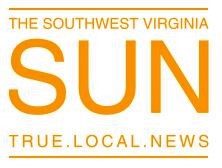In a testament to its unwavering commitment to the commonwealth, Radford University emerges as an economic engine, significantly influencing local, regional and state economies, according to a new economic impact study. The independent study found the university contributed substantially to its region of impact and beyond.
The total economic impact of Radford University on the Commonwealth of Virginia was a staggering $421.7 million in FY2022, with $390 million remaining within the region.
President Bret Danilowicz expressed his enthusiasm about the university’s economic impact. “Public institutions like Radford University enhance financial health not just for their students or alumni, but for all Virginians. We are proud of the economic impact Radford has on Southwest Virginia and the entire commonwealth. As we use this study to understand our strengths and guide future strategies, we expect that great outcomes are on the horizon.”
This impact is derived from direct expenditures for goods and services by the university, its faculty, staff, students and visitors, along with the indirect and induced impacts of those dollars being re-spent in the state and regional economies. For every $1 allocated to Radford University in FY2022, the university returned an impressive $6.35 in economic impact to the statewide economy. When factoring in the human capital improvements to FY2022 graduates, that benefit increased almost four times to $23.80.
“As a regional comprehensive university and an anchor institution, we believe it is our responsibility to create pathways to economic mobility and contribute to the well-being of our community,” said Angela Joyner, Vice President of Economic Development and Corporate Education. “This study demonstrates our continued commitment to economic development.”
Among the key findings, Radford University’s impact includes:
The university’s employment impact totaled 5,561 jobs in the Commonwealth. These jobs included not only direct employment by the university (1,574 jobs), but also jobs that were stimulated in Virginia through spending by the institution and its employees, students, and visitors (3,987 jobs).
Radford University students played a pivotal role, injecting an estimated $85.7 million into the statewide economy in FY2022, with a substantial 94% of spending occurring within the region. Additionally, students dedicated over 7,600 hours annually to community service, resulting in an estimated volunteerism impact of $229,109.
Visitors to the university made a significant contribution, infusing approximately $7.1 million into the regional economy in FY2022 through local spending on lodging, food and beverage, retail shopping and recreation.
Highlighting the enduring impact of a Radford University education, Highlander alumni are estimated to contribute a substantial $2.2 billion annually to the Virginia economy through consumer spending. Impressively, 70% of Radford University alumni reside in Virginia.
More than 2,000 individuals graduated with a degree from Radford University in FY2022, enhancing their earning potential in the job market. The human capital improvement of these graduates is estimated to bring an extraordinary $1.16 billion in additional income to the Virginia economy over the course of their careers.
“The study highlights the many ways in which the university contributes to local, regional, and statewide economies,” said Charlie Jewell, Director of Economic Development and Community Engagement. “The university is committed to being an engaged economic development partner and we look forward to identifying new and creative ways to expand our impact in partnership with businesses, governmental entities, and nonprofits.”
The Radford University Division of Economic Development and Corporate Education contracted with the New River Valley Regional Commission to produce the 2022 Economic Impact Study. The New River Valley Regional Commission developed the study utilizing IMPLAN software, an economic data, analytics and modeling tool that is widely used in estimating economic impacts.





